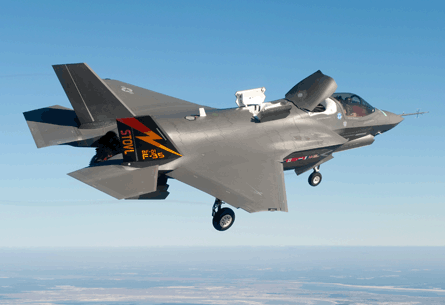A software glitch grounded the Lockheed Martin F-35 test fleet for at least four days and the short take-off and vertical landing mode remains barred due to an unresolved mechanical problem.
Lockheed lifted a grounding order on 5 October after installing a software fix that prevents a BAE Systems-supplied fuel boost pump system from potentially failing in flight. The grounding order was announced on 1 October, but F-35s had not flown since 28 September.
The F-35B STOVL fleet has been cleared to resume conventional flights, and Lockheed officials expect the type to resume tests shortly.
Lockheed has also discovered the root cause of a problem with a hinge on an auxiliary air inlet door immediately aft of the F-35B's lift fan. The company describes the cause as a "durability issue involving a bearing-retention feature in the door's forward hinge".
 |
|---|
© Lockheed Martin |
A solution is being installed "immediately", Lockheed says, but STOVL flights are ruled out until the modification clears airworthiness certification.
Although the grounding was brief, the combination of the two issues increases pressure on the flight-test schedule.
Lockheed has committed to completing 394 flight tests in 2010, which is down from more than 1,200 flights originally scheduled this year. To date, nine aircraft in the test fleet have accumulated 270 flights, surpassing the plan by at least 25.
The bulk of the flight-test sorties have been logged by the F-35A conventional take-off and landing variant, with 115 flights completed, compared with at least 54 planned through 5 October.
The STOVL fleet has struggled to overcome a series of reliability problems. Four F-35Bs have logged 141 flights to date, or 40 fewer than scheduled.
Even before the grounding order, the programme's sortie rate had started to slow down. September was the first month this year when the flight-test fleet fell short of the total number of planned sorties, with only 36 of 45 planned flights completed.
The programme now has less than 90 days to complete 124 flight tests to remain on track by the end of the year. Lockheed also has other commitments to meet. At least two more flight-test aircraft - BF-5 and AF-4 - are due to complete first flight before the end of the year.
Source: Flight International























